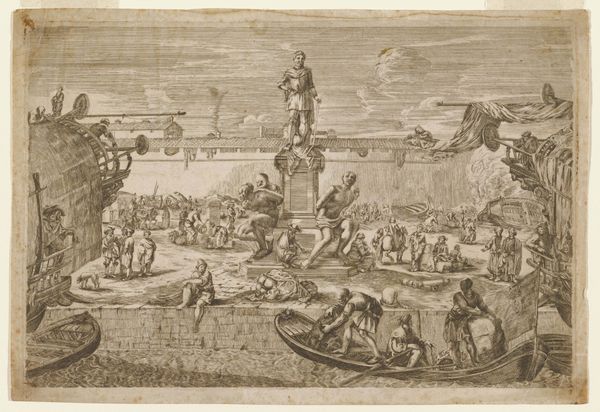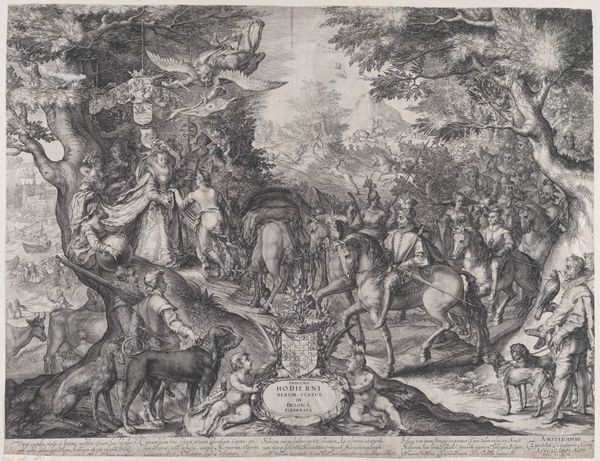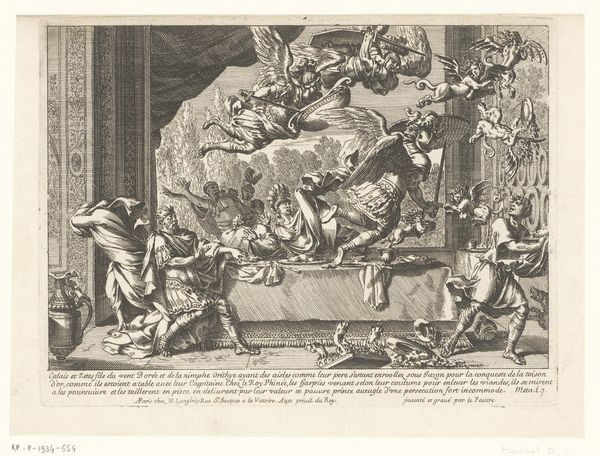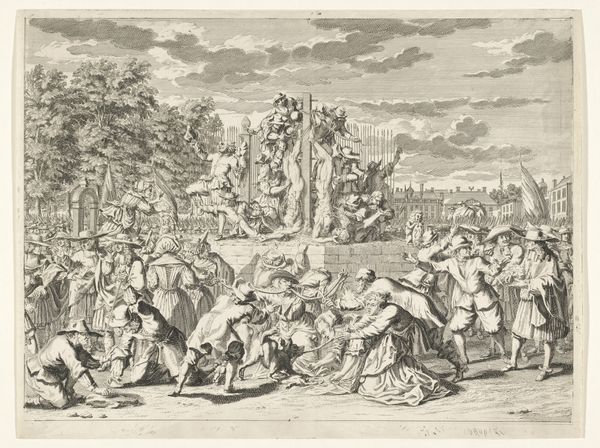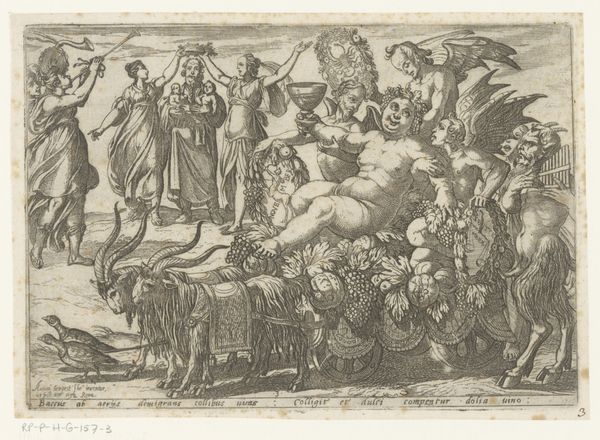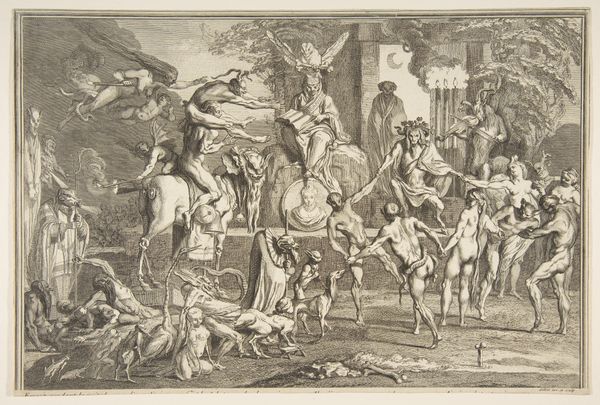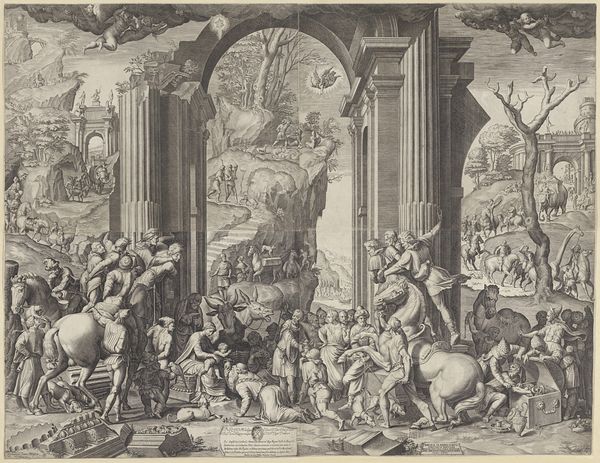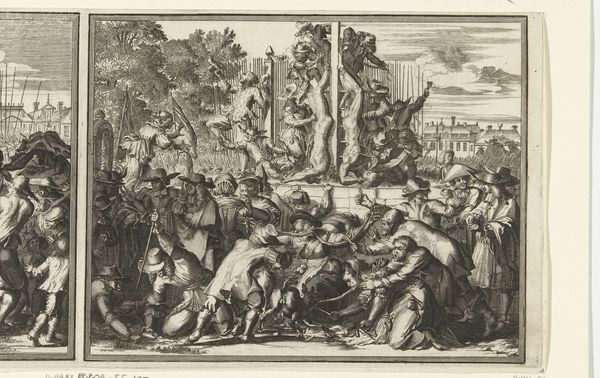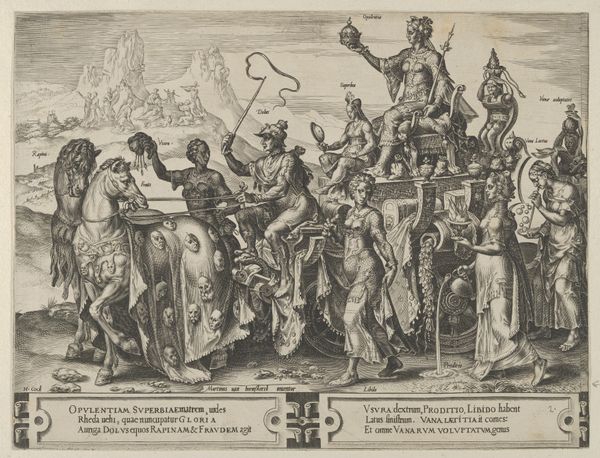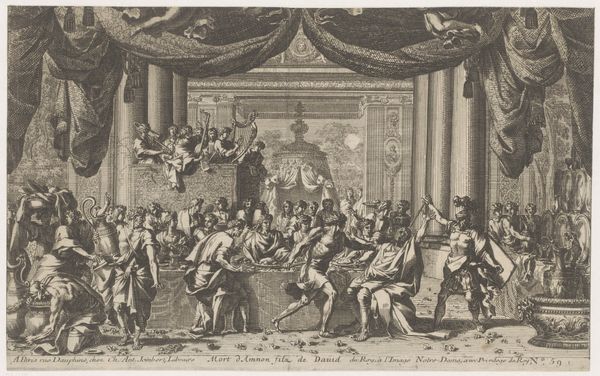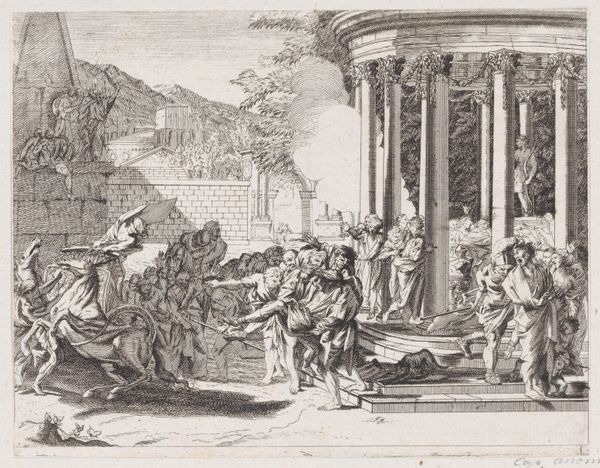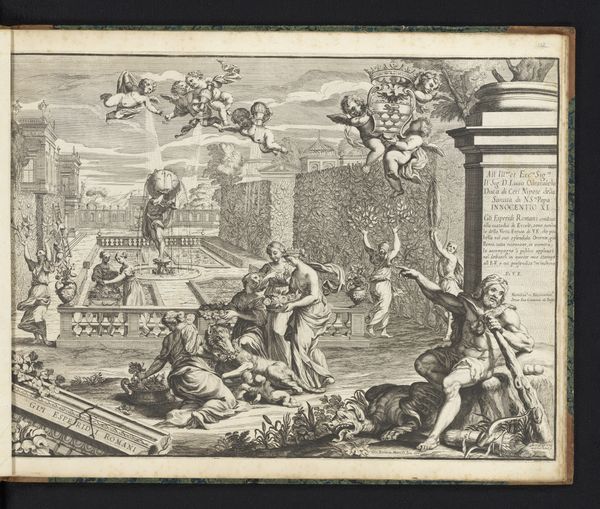
print, engraving
#
narrative-art
#
baroque
# print
#
figuration
#
line
#
cityscape
#
history-painting
#
engraving
Dimensions: plate: 40.6 x 51.7 cm (16 x 20 3/8 in.) sheet: 41.2 x 52.1 cm (16 1/4 x 20 1/2 in.)
Copyright: National Gallery of Art: CC0 1.0
Editor: So, this engraving, "Uytrecht Herstelt (The Recapture of Utrecht, 1673)" by Romeyn de Hooghe from 1674, feels incredibly detailed and symbolic. It’s packed with figures, almost overwhelmingly so. How do you interpret all of these characters? Curator: The density is indeed purposeful. Hooghe presents us with not just a historical event, but a symbolic narrative deeply rooted in cultural memory. Note how classical motifs are interwoven with contemporary events. The central figures embody virtues, reclaiming what was lost. Do you notice how the Dutch maiden, representing Utrecht, is greeted? Editor: Yes, she seems to be welcomed or embraced, maybe forgiven. It’s like a reconciliation scene. Curator: Exactly. It's a return to order, a reaffirmation of Dutch identity. Consider the symbolism of the lion, a powerful emblem of Dutch strength, juxtaposed with the written text. What does this combination evoke for you? Editor: The lion seems like a proud guardian. I guess the text explains the history to reinforce the narrative. It feels propagandistic. Curator: Propaganda, certainly, but also a carefully constructed iconography designed to resonate with a specific audience, reminding them of their shared heritage and resilience. Every element – the figures, the architecture, the light – plays a role in conveying this message. The engraving memorializes the liberation from French occupation and simultaneously serves to reignite patriotic sentiments in the Dutch population, linking them to a rich past. Do you think that a modern audience can truly grasp all of the different symbols used to support the vision of the piece? Editor: It is hard to decode now. I see that there are layers upon layers of meanings, tying into Dutch identity, like a visual time capsule. Curator: Precisely. It shows us how art was not only to depict but also to actively shape public sentiment. These engravings acted as both historical records and cultural artifacts deeply integrated into the political sphere. Editor: I see now how interwoven art, history, and cultural identity are, using symbols as the binding language. Thanks!
Comments
No comments
Be the first to comment and join the conversation on the ultimate creative platform.
